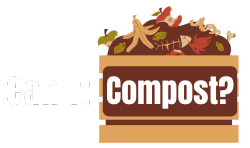Can I Compost Shrimp Shells?
Shrimp shells are a great addition to your compost pile because they're a rich source of calcium and other minerals.


Sourced & Cited
Shrimp shells are a surprisingly valuable addition to your compost heap! They offer a natural source of calcium carbonate, benefiting your soil's overall health. However, there are a few things to keep in mind for successful composting.
Compost Classification
Neutral: Shrimp shells are primarily calcium carbonate, a mineral component that doesn't fit neatly into the brown or green categories. They contribute to the overall balance of your compost pile without significantly impacting the nitrogen-carbon ratio.
🌱 Key Nutrients
This item contributes the following nutrients to your compost:
Calcium (Ca)
🏷️ Tags
Important characteristics to know about this item:
Breaks Down Slowly Pest Attraction Risk Odor Risk Use in Moderation Adds Key Nutrients
⚠️ Potential Risks
- Attracting pests: Smaller pieces might attract pests like rodents or insects if not properly managed within the compost pile.
- Slow decomposition: Shrimp shells decompose more slowly than many other organic materials, so be patient.
- Potential for odor: If not properly buried or managed in a well-aerated compost pile, shrimp shells can contribute to unpleasant odors.
💡 Best Practices
- Crush shells before adding them to the compost to speed up decomposition.
- Mix them well with other "brown" and "green" materials in your compost heap for a balanced mix.
- Ensure your compost pile is well-aerated to prevent foul odors. Turn your pile regularly.
- Add shells in small quantities to avoid overwhelming the compost with calcium.
